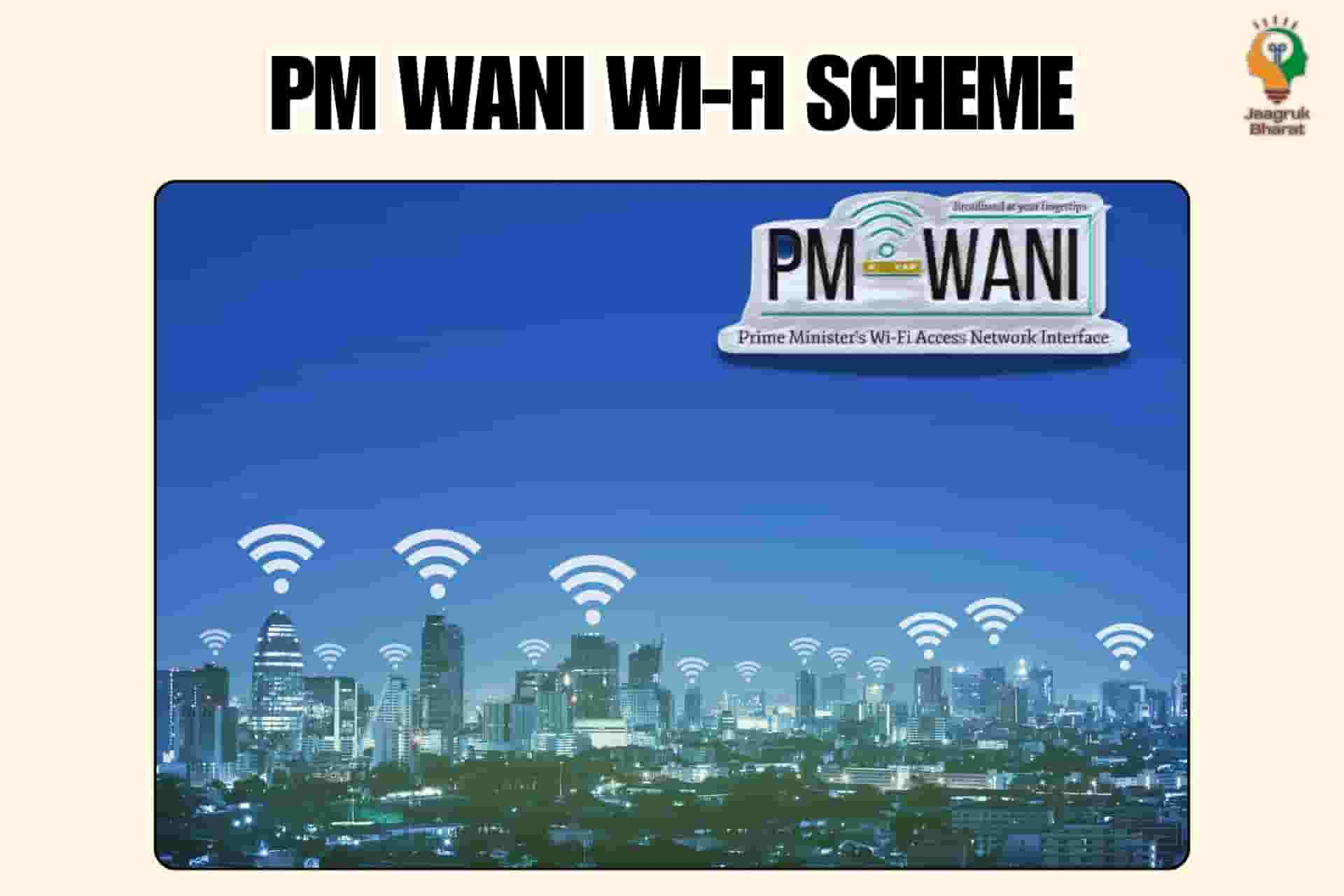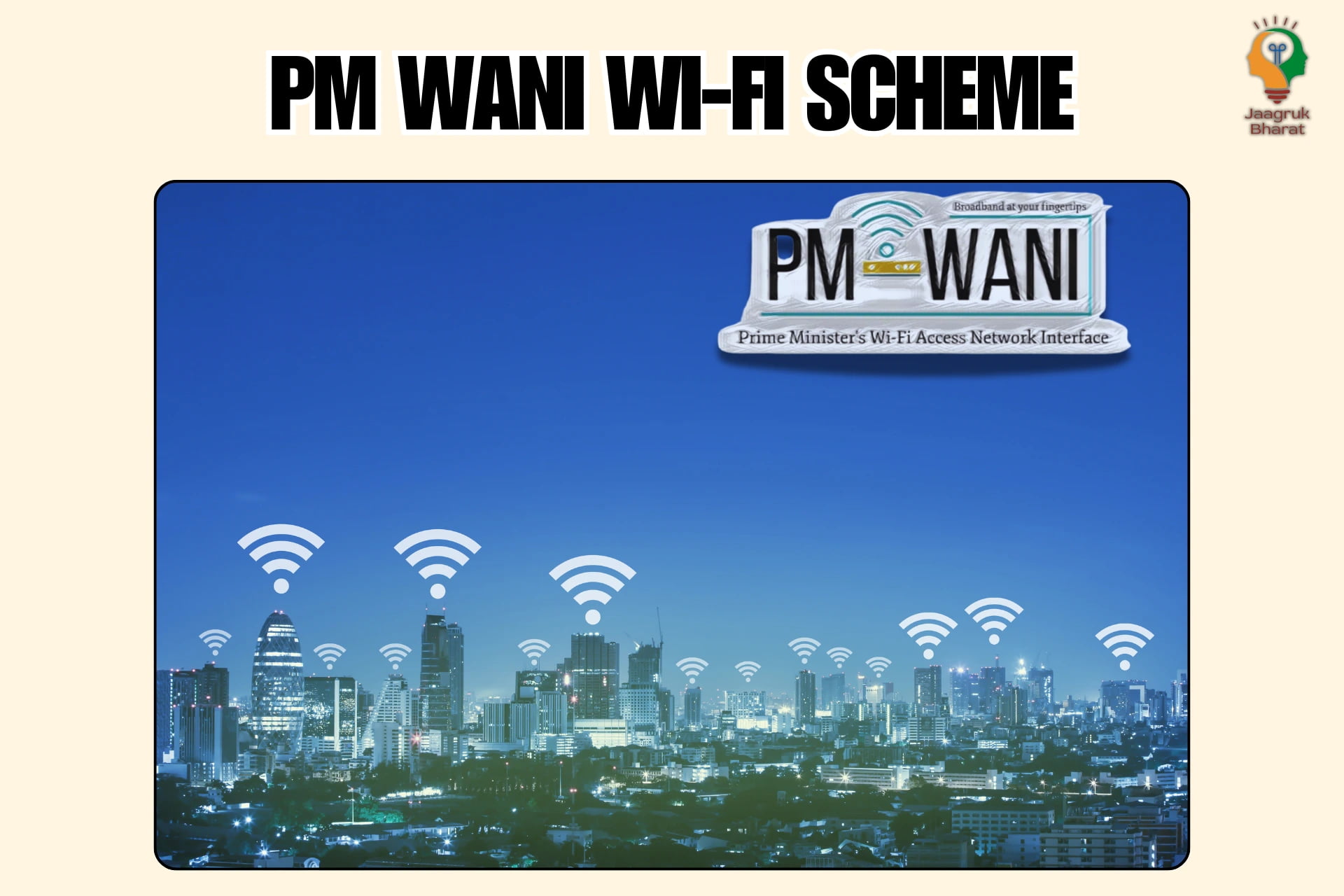PM WANI Wi-Fi Scheme, Plan & Price | Get Free Wi-FI Wherever You Go With PM-WANI
Updated: 12-10-2025 at 11:25 PM
12k


The PM Wi-Fi Access Network Interface, or PM-WANI scheme, launched by Prime Minister Narendra Modi, aims to revolutionise connectivity and internet accessibility for millions across India. This is due to the proliferation of low-cost public Wi-Fi hotspots.
Let us understand the objectives, features like the PM Wani recharge plan, and implementation plans for this ambitious public digital infrastructure initiative named PM WANI Yojana.
Overview
The table below summarises some key details about the PM WANI Scheme that one should know.
| Name of the scheme | PM WANI Yojana |
|---|---|
| Launched by | Indian govt |
| Objective | To expand the reach of internet connectivity across all regions of India by providing PM WANI free wifi |
| PM Wani recharge plan | Varies based on data usage, starting from Rs. 6 for 1 gb and Rs. 99 for 100 gb |
The Need For Easy Access To Wi-Fi In The Digital India Era
Though India is the world’s second-largest telecom market, internet penetration remains at less than 50%, constrained by affordability barriers and network access challenges beyond urban pockets. The PM-WANI WIFI plan seeks to address this ‘digital divide’ by enabling widespread and economical Wi-Fi availability by leveraging the services of public data offices (PDOs), public data office aggregators (PDOAs), and app providers.
Unbundling Wi-Fi to drive mass adoption by bridging connectivity gaps for underserved demographics, including rural communities, business clusters, social segments, etc., is the key motivation behind PM-WANI WIFI Yojana. By facilitating public-private collaboration for 10 million Wi-Fi hotspots as envisaged, it aims to achieve the Digital India goal of inclusive internet proliferation, just as PCOs earlier bridged telephony gaps.
Features Of The PM-WANI WIFI Plan
The PM-WANI WIFI Yojana rests on three envisaged business models: PDO, PDOA, and App Provider, leveraging a decentralised architecture rather than a centralised, single authority-led mechanism.
- PDOs would establish and maintain Wi-Fi access points and deliver internet services to subscribers based on architectures (captive, public), technologies (2G, 3G, 4G), and authentication modes (prepaid and postpaid) permitted by the DoT. A license is not required.
- PDOAs would perform the critical role of an aggregator by bringing together PDOs within a specific geography to register and maintain online databases and settlement platforms. Need a UL VNO license.
- App providers would develop application programming interfaces for user onboarding, payments, and grievance management to ease the discovery and use of PM-WANI by subscribers.
Implementation Roadmap For PM-WANI WIFI Rollout
The PM WANI free wifi scheme guidelines provide flexible options to PDOs around backhaul connectivity via broadband, wireless mediums, or even TSPs based on availability, reliability, and techno-commercial considerations. The sourcing of spectrum needed for providing Wi-Fi services is to be based on authorizations from the Wireless Planning Commission or DoT-approved TRPs.
Ease of user onboarding through paperless e-KYC using Aadhar or mobile number verification coupled with interoperability across hotspots through WANI-compliant CACs will enhance adoption. The DoT plans extensive outreach programmes to encourage wider participation by public agencies to expand hotspot density.
The commercial considerations for PDOs around Capex, Opex, RoI, and pricing models factoring in authentication costs, backhaul charges, spectrum, etc. will determine sustainability. Revenue-sharing arrangements between PDOs, PDOAs, and App eco-system partners are activities left open currently through mutual agreements.
Impact Of PM-WANI Project On Digital India Vision
The PM-WANI plan reflects the vision of bridging India's digital divide by spearheading affordable Wi-Fi connectivity through scalable hotspot networks. Its public-private partnership model encourages decentralised infrastructure creation, leveraging the entrepreneurial capacity of PDOs, SDOAs, and app providers.
By unshackling Wi-Fi infrastructure from licensing constraints around equipment ownership, network interoperability, authentication modes, and backhaul connectivity options, PM-WANI WIFI effectuates ease of doing business. The framework enforces security compliance while supporting customisation to local needs, a balance important to attracting investments.
The scheme's success lies in the rapid onboarding of PDOs across urban and rural geographies. Revenue-sharing arrangements between stakeholders will determine sustainable business models and hotspot density for last-mile coverage. Extensive trials to refine execution modalities give confidence for a prospective pan-India launch.
Conclusion
The PM-WANI plan has the potential to achieve Digital India's goals of ubiquitous and economical internet connectivity, just like PCOs did for telephone access. Unfettered Wi-Fi accessibility can transform governance and commerce and empower citizens across education, skills, and entrepreneurship. Delivering on this promise will cement the scheme’s legacy as a digital public good.
Get the latest updates on government schemes and policies with Jaagruk Bharat. Join India's biggest Jaagruk Bharat community. Share your thoughts, questions, and favourite topics with us.
Frequently Asked Questions
1
0
12k
1
0
12k Views
0
No comments available





Our Company
Home
About
T&C
Privacy Policy
Eula
Disclaimer Policy
Code of Ethics
Contact Us
Cancellation & Refund Policy
Categories
Women
Insurance
Finance
Tax
Travel
Transport & Infrastructure
Food
Entertainment
Communication
Government ID Cards
E-commerce
Traffic guidelines
Miscellaneous
Housing and Sanitation
Sports
Startup
Environment and Safety
Education
Agriculture
Social cause
Employment
Disclaimer: Jaagruk Bharat is a private organization offering support for documentation and government scheme access. We are not affiliated with any government body. Official services are available on respective government portals. Our goal is to make processes easier and more accessible for citizens.
All Copyrights are reserved by Jaagruk Bharat